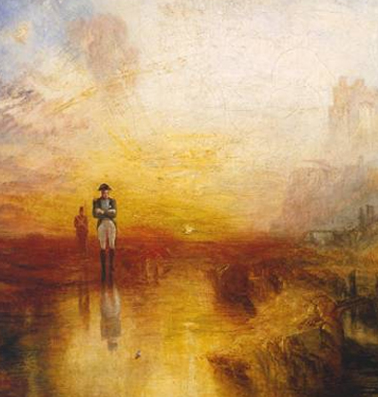A major reexamination of Turner's attitude to the human figure.
RUSKIN called them 'roly-poly bag-of-potatoes people' and referred to their 'round balls with four pink spots in them instead of faces'. Kenneth Clark thought they looked like currant buns, sausages and poached eggs. Turner's figures - those strange, dumpy characters that crop up like disfiguring graffiti on most of his landscapes - have always perplexed even his most fervent admirers. How could a great painter be so bad?
Take the Tate's War: The Exile and the Rock Limpet, exhibited in 1842. Against a lurid, vaporous seascape, bloodshot sun setting over incandescent waters, the exiled Napoleon muses (as Ruskin explained) on the fact that even a rock limpet has 'power and liberty, denied to him'. 'He is in black military boots,' sneered The Literary Gazette at the time, 'the continuous reflection of which from his toes in the water gives him the appearance of being erected upon two long stilts.' The Times poked fun at Turner's 'elongated Napoleon . . . running to seed in a redhot atmosphere of brimstone and brickdust.'
'Turner and the Human Figure', in the watercolours room of the Clore Gallery, is a brave exhibition, since it aims to reverse 150 years of received opinion and demonstrate Turner's skill as a painter of people. It never entirely proves its point, since there is always the evidence of the paintings in the rest of the Clore to show how bad Turner's figures could be - such unmitigated disasters as Pilate Washing his Hands or Shadrach, Meshech and Abednego in the Burning Fiery Furnace. But it does, nevertheless, suggest the importance that Turner himself attached to the figure in his art.
Much of the show is given over to a demonstration of the sheer range of...

A Bad Head for Figures
18-04-1989

